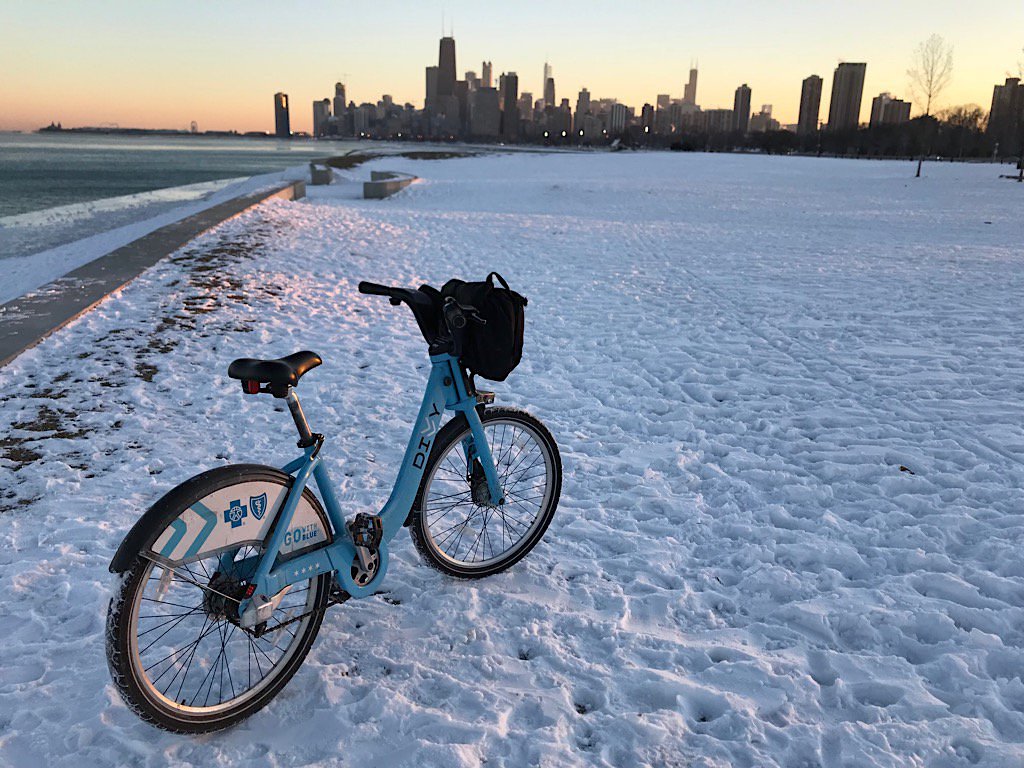With lows in the negative upper-single digits Fahrenheit recently, we’re probably at the absolute rock bottom of the annual Divvy ridership cycle at the moment (although it’s still a great way to get around, provided you bundle up properly.) But that’s not stopping the bike-share network from celebrating another banner year.
According to Divvy staffers, the system added 5,000 new annual members in 2017, for a total of 37,000. 337,000 day passes were purchased.
3.8 million trips were taken in 2017 -- some 200,000 more than were taken in 2016, and a new record – for a total of 7.3 million miles. That’s more than 293 times the circumference of the globe.
“We are grateful to the thousands of Chicago residents and visitors who have worked so hard this year to turn Divvy into a crucial component of our city’s transportation network,” said Divvy general manager Michael Critzon. “No matter the weather, you hopped on the blue bikes to streamline your commute, to build movement into your daily routine or simply to explore the city.”
Divvy reached another new milestone in 2017 with the busiest day ever. 22,168 rides were taken on July 8, the first Saturday after the Fourth of July. Thirteen other days this summer had over 20,000 trips. 2.5 million rides were taken by Labor Day, which represented an 8 percent increase over the same time in 2016.
Divvy also noted that the top 1 percent of riders in 2017 took more than 535 trips each.
The system currently has 130 employees, and the rebalancing, bike mechanic, and station management jobs are unionized.
That’s not to say that everything was peaches and cream in 2017. In 2016 the Divvy station coverage area was expanded to include Evanston and Oak Park, as well as more Chicago neighborhoods, largely communities of color on the South and West sides. In general these new docks have seen far fewer trips than those in more populated parts of the city, such as downtown and the north lakefront, where better Divvy station density makes using the system more convenient.
Last month the Chicago Tribune’s Mary Wisniewski reported that Divvy's net income to the city fell from $2.84 million in 2015 to $1.97 million in 2016, largely due to poor ridership numbers for recently installed stations. While the city made a $45,859 profit on operations in 2015, city had an operational loss of $752,011 in 2016, which was what put a crimp in the overall bottom line.
Divvy deserves kudos for these latest ridership records. But the city is going need to do more promotion of the system in low-ridership areas and come up with new strategies to broaden the appeal of bike-share, such as offering the option of purchasing a single ride, or else find new revenue sources like additional sponsorships, if the system is going to make ends meet in 2018.





